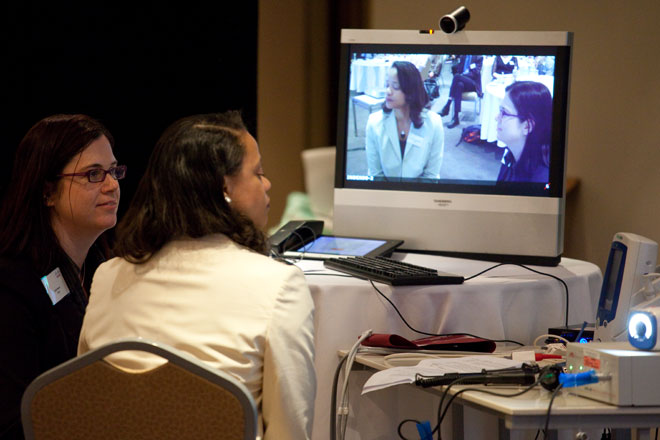Got a stomach bug or a cough that requires urgent attention? Launching today, a new mobile app called Doctor on Demand can connect you with a physician anywhere and at any time for a $40 video consultation.
The service is available in 15 states, including California and New York, with hundreds of trained and licensed physicians already signed up. Typically, doctors will block off several hours per day to answer Doctor on Demand queries — the most common concerns include prescription orders, allergies, sports injuries, rashes, and travel issues. For more urgent and/ or chronic issues, patients should strongly consider an emergency room visit.
Doctor on Demand also revealed today that it has raised a sizable $3 million seed round from Venrock, Andreessen Horowitz, Google Ventures, Lerer Ventures, Shasta Ventures, and Athena Health chief executive Jonathan Bush.
According to the founders, Adam Jackson and Dr. Pat Basu, doctors are increasingly willing to consult with patients online, so the timing is ideal. And their service is HIPAA compliant, meaning that Doctor on Demand meets the necessary regulatory requirements around security.
According to recent studies, the majority of doctors now use a smartphone or tablet device to communicate with patients, with each other, and to research new medications. This has led to far more flexible lifestyles for doctors. Many are choosing to work remotely and consult with patients on video chat services. “Although much of the US workforce has enjoyed these benefits for years, this is a first for physicians,” said Basu in an interview.
Still, not everyone is in favor of services like Doctor on Demand, and the telehealth space has its critics. Some people fear doctors can miss non-obvious symptoms when they don’t see a patient in person. But the founders believe that physicians spend far more dedicated time with a patient when they adopt electronic methods.
“Without the same paperwork, insurance burdens, and overhead, doctors spend 90 percent of their time on the patient,” said Basu, who previously worked as a Stanford University Medical Center radiologist and a White House fellow. Another benefit for physicians signed up for Doctor on Demand is that coughs and tummy bugs tend to have a lower malpractice risk, unlike the complex cases that require in-person visits.
Doctor on Demand makes its money by charging a flat fee. Patients pay $40; the physicians pocket $30, and Doctor on Demand takes $10.
Telehealth, or the use of secure video conferencing tools to deliver care, is viewed by many policymakers as a new model for convenient care. In Washington D.C., telehealth is one of the few health trends that has received widespread support from both sides of the aisle, with Republicans and Democrats passing bills to support the dissemination of these services.
For this reason, it’s a hotly competitive space, with American Well and TeleDoc also offering video-based consultations with a physician.
However, what’s unique about Doctor on Demand is that physicians are working on “shifts,” meaning that they’re fully focused on consulting with patients and not on juggling multiple tasks. The company is also taking a fairly unique approach by connecting patients and doctors directly rather than selling the service to insurance providers.
That said, the company won’t bypass insurance altogether, which may lower the cost for consumers. Doctor on Demand is in discussion with a number of providers to offer direct reimbursement for the service. This will likely be finalized in 2014.
Doctor on Demand is available in the following states: California, Florida, Georgia, Illinois, Indiana, Michigan, Mississippi, New Jersey, New York, North Carolina, Ohio, Pennsylvania, Texas, Virginia, and Washington.


